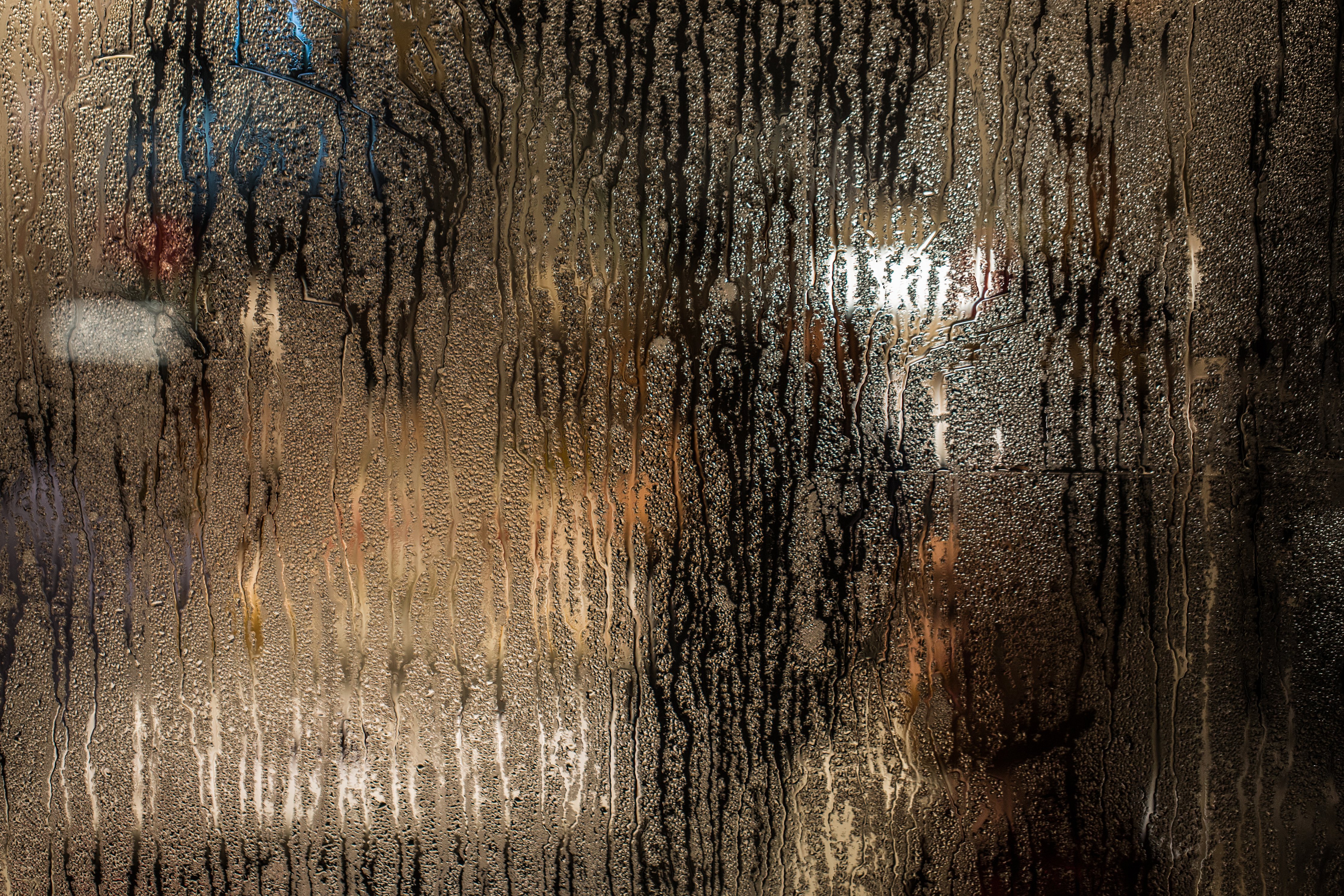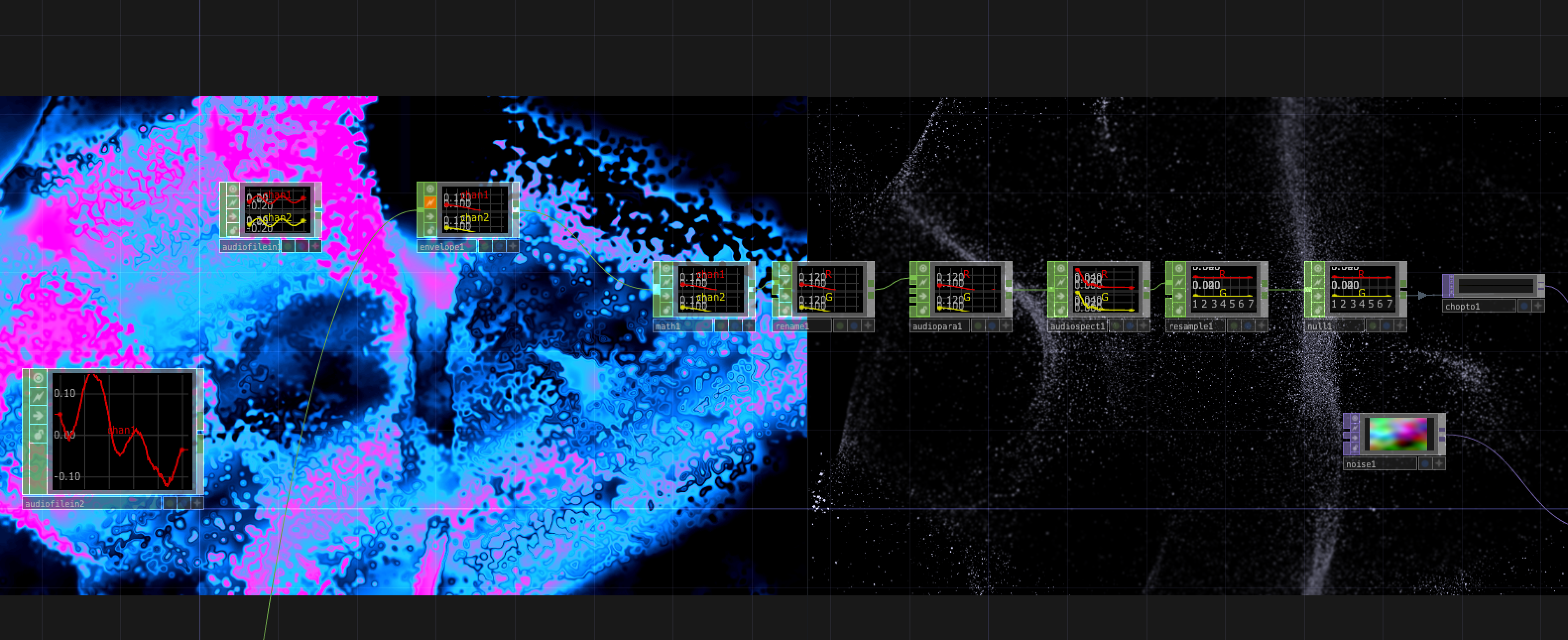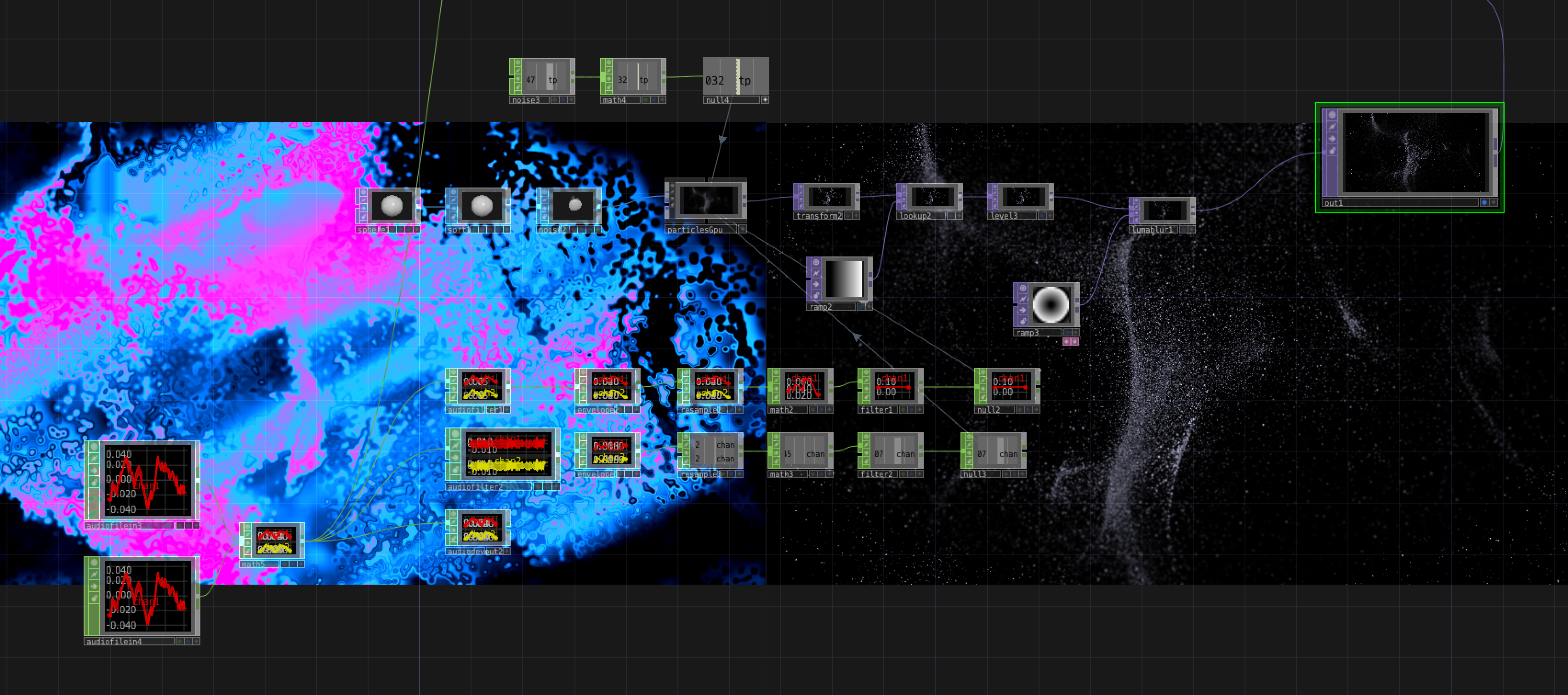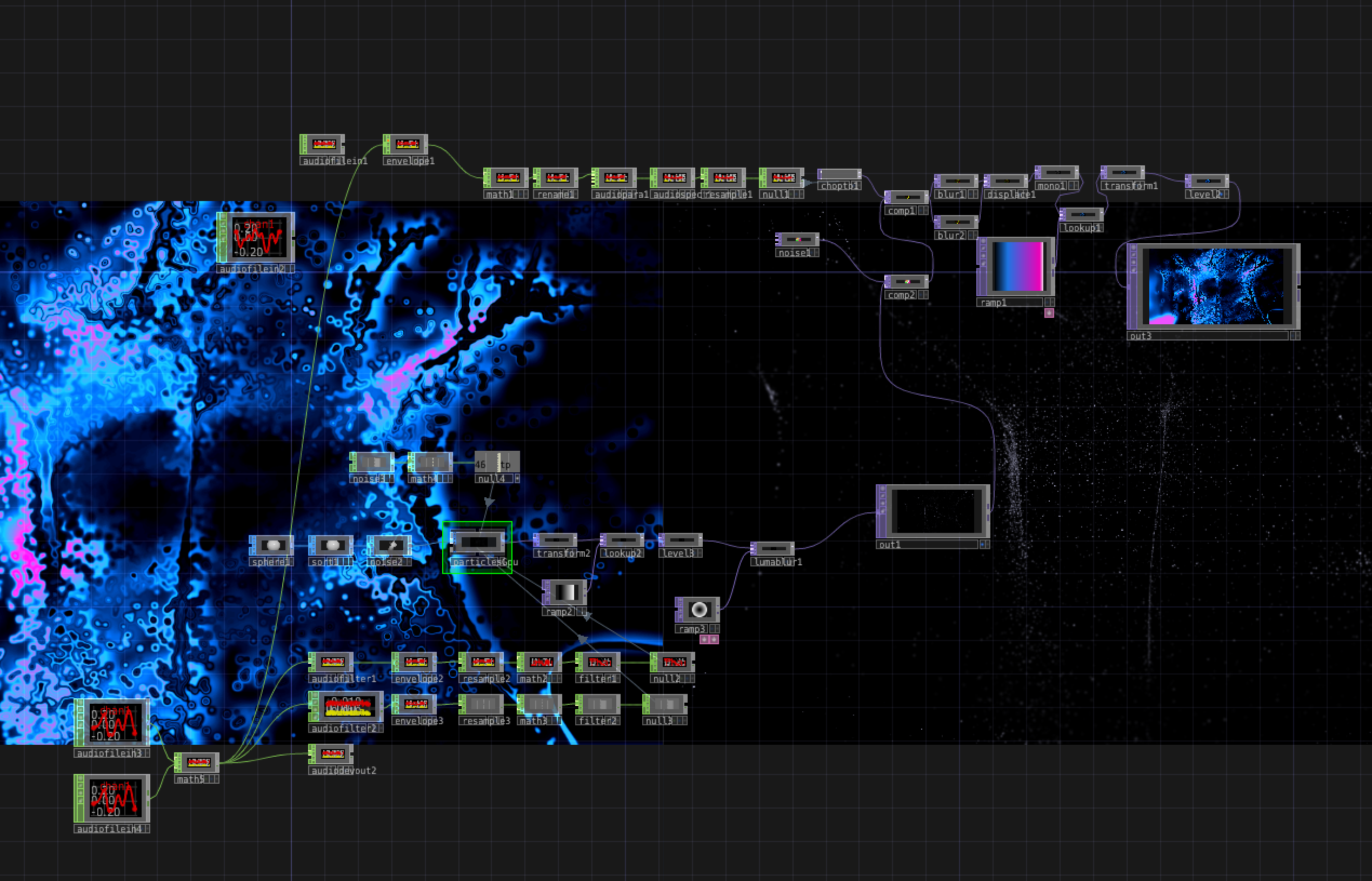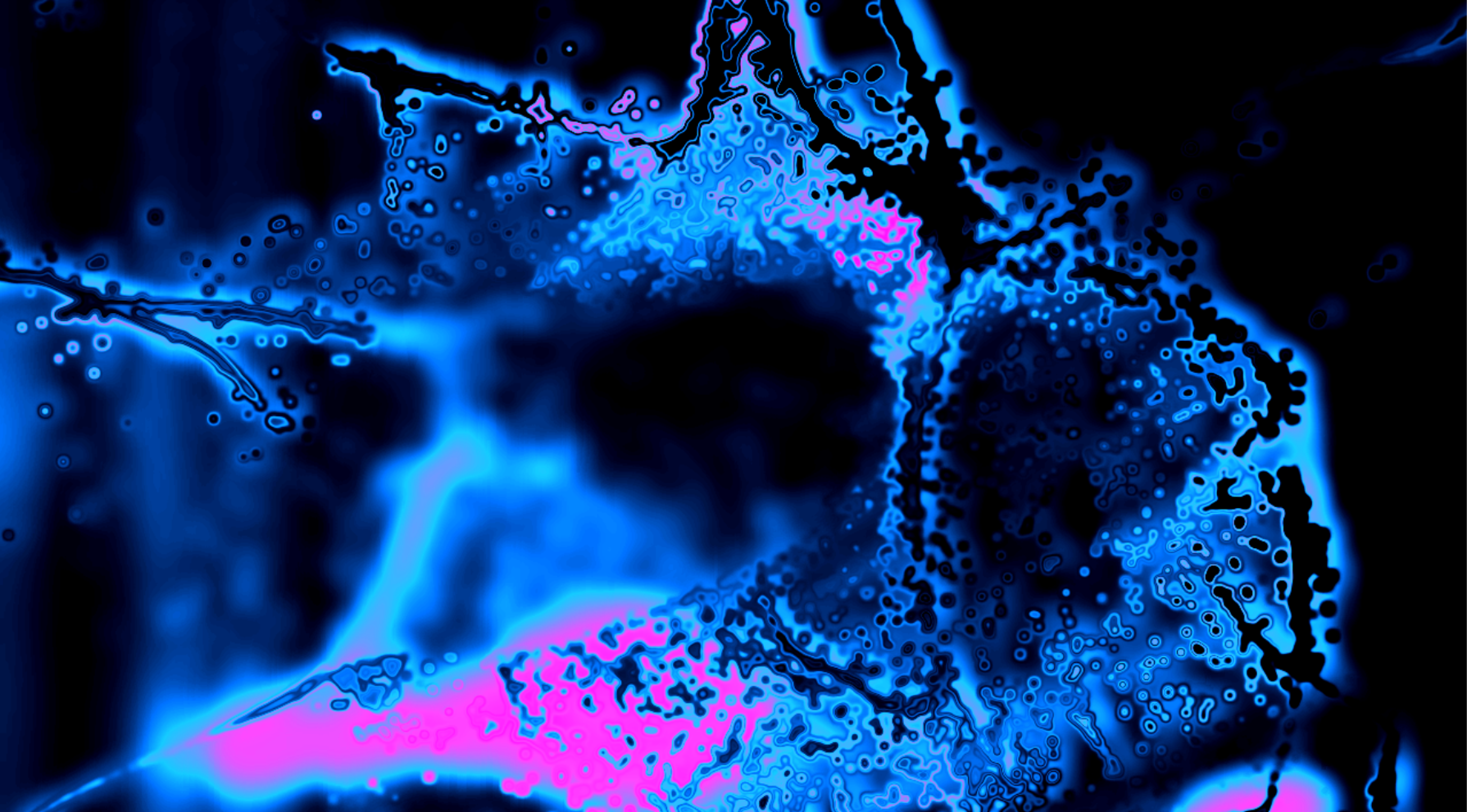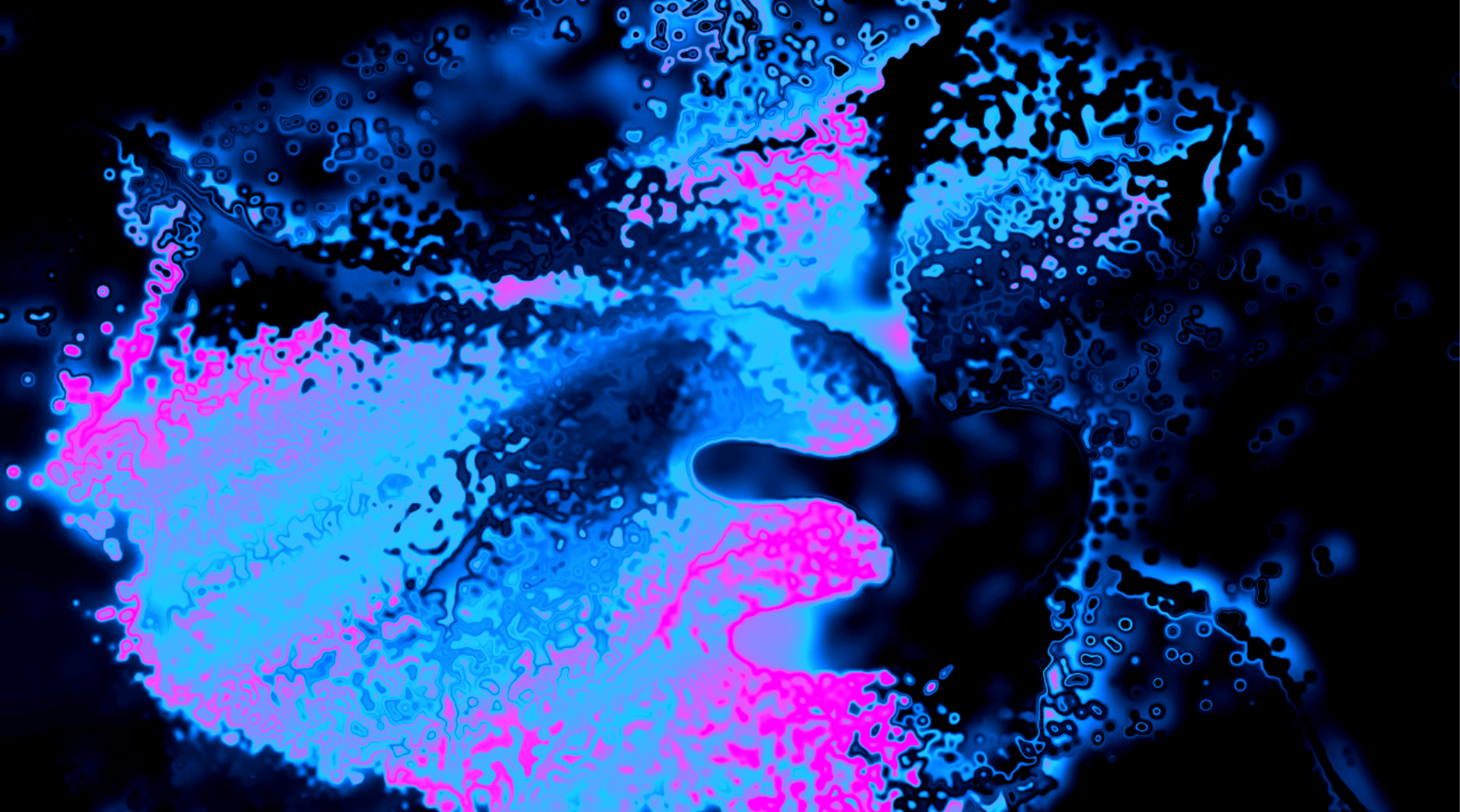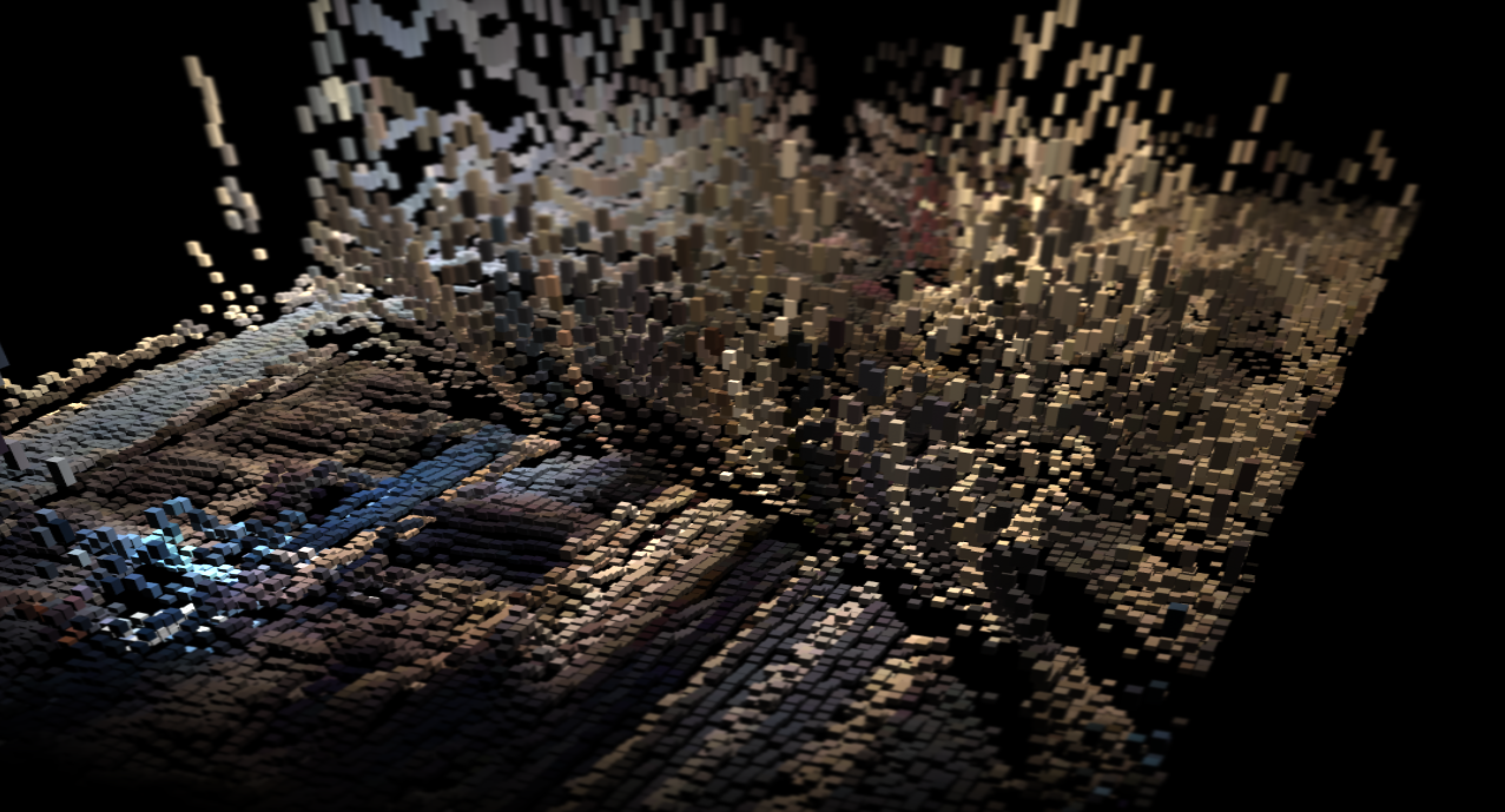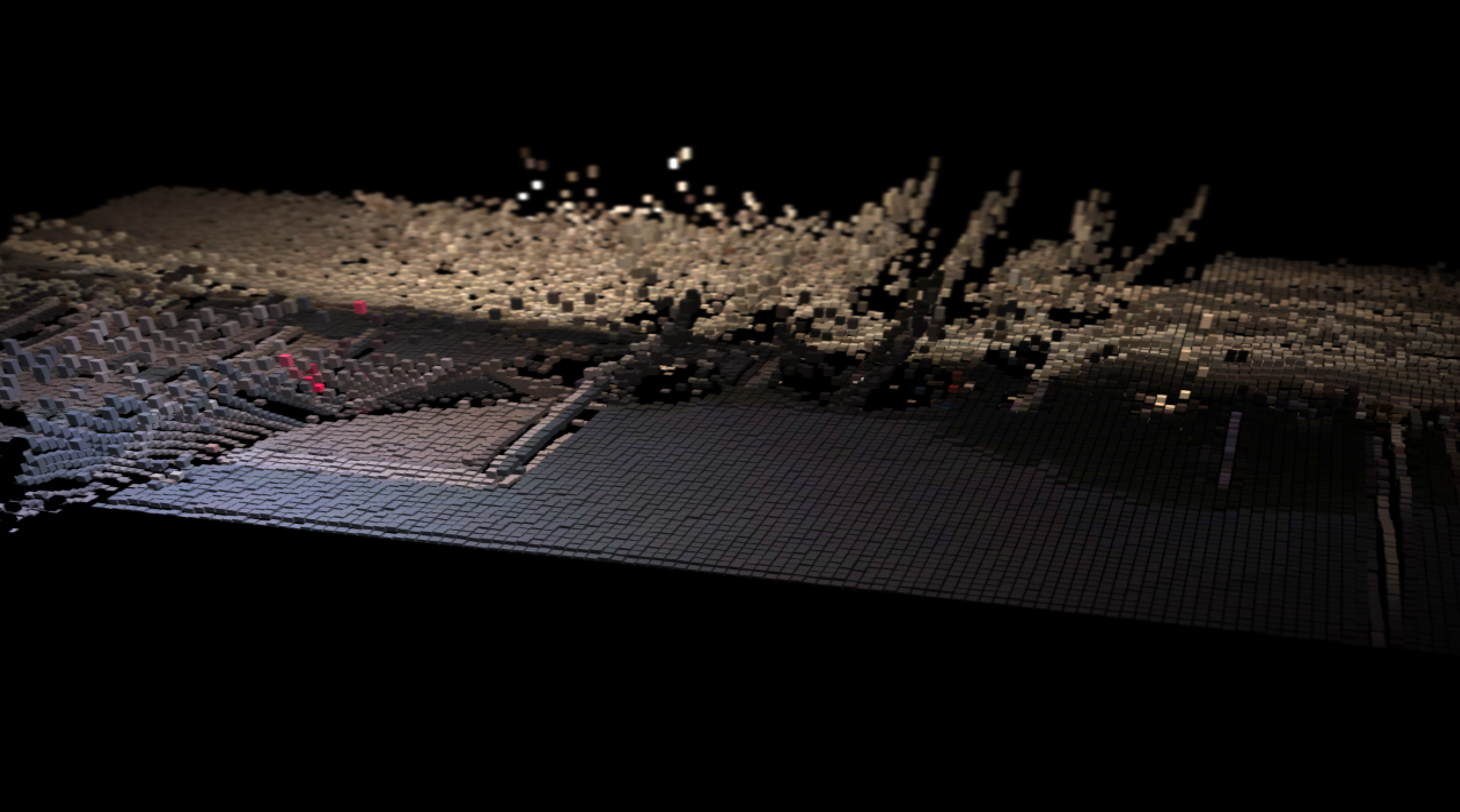In The Wind
What you are listening to is the sound of my daily life. Those sound dangling in the air and flying with the wind. As soon as I listen to it, something will be changed that a part of the sound will be magnified others I do not have much impression. What you are watching is the visual shape of the sound. I believe each sound have their own form and shape. I am trying to demonstrate my thinking about the sound and let you dive into it.
produced by: Shiqi Dong
Introduction
What I have made is an audio-visual project. It consists of two parts. One is the sound the other is the visual part. There are two different scenarios in this work. The main subject of this project is field recording. What I am trying to do is combining the field recording audio and the visual language, let people can see the sound while they are listening.
The content of my field recording is the day which was raining and thundering. The second one is the video of traffic flow which I filmed on the street. Those are really common scenes in our life. But I doubt most people have attention on it so that the beautiful sound barely can be found.
Visualisation is also important in my work. In the first scene, I set two screens side by side. They are moving together by the effect of the audio. The right-hand side is trying to simulate the thunder cloud. It consists of a bunch of particles in the misty space. On the left one, I am trying to make a sort of water flowing on the basis of the thunder cloud. The particles are merged in the picture which you might notice. For the second scene, I want to use different settings to express it. Due to my source is video so I can use this feature to make the visualisation. As you can see, it is a matrix of boxes, when you hear the vehicle sound the moving of the boxes will be radically and the whole “floor” is shaking.
Concept and background research
This work is actually inspired by the field recording. Field recording as a brunch of sound art has an interesting history. Also has a crucial status. I have done some research about it in the following paragraph.
In Peter Szendy’s provocative book Listening, he presents two related questions: “Can one make a listening listened to? Can I transmit my listening, unique as it is?” It’s these questions that have occupied the thinking of field recording a great deal over the past few years. This preoccupation has resonated through much of artists’ work, specifically through Lawrence English’s practice of field recording.
From Lawrence’s article, I learn that “listen” is not just “hear”, people listening which using their heart and mind. That is a subjective activity, we cannot hear everything in the environment. We are choosing the sound which is fitful for us. Moreover, we may add our own feeling to this. So, when we listening to a field recording piece we may not take all the sound though the artists have recorded.
For the recorder, it does not just record all the sounds you have heard. In the process of recording, the artist also has the choice to decide which sound should be recorded. Field recording is not simple to take a photo of the environment. Spanish sound artist Francisco Lopez also argues against the notions of documentary objectivity. His work, which centres around the transformation of reality though sound materials recorded in the field, pushes a reductive approach to listening, one informed by the theories of phenomenologist Edmund Hussurl and French musique concréte pioneer and Groupe de Recherches Musicales (GRM) leader Pierre Schaeffer. “The move away from the representational and documentative does not essentially depend on transformation of sounds but fundamentally on the listening mode we carry out,” Lopez says. “A ‘reduced’ Husserlian/Schaefferian one opens, in my opinion, the gates to a different world that tends to be self-referential and thus more open and free. I use these materials as sound-in-itself, as opposed to the representational approach. That is, as phenomenological substance, both in their manifestation as originally recorded and in the typically long process of evolution that takes place in the making of my compositions.” David Toop says “In this sense, field recording gave me a new understanding of listening: the point of audition could change constantly; the sound field is in a constant state of dispersal. That realisation continues to have a deep effect on my conception of music and listening.”
From above, I have an idea for visualising the field recording. So, what kind of vision could be the reflection of the sound? I decide to think about it from the sound itself. The first scene is a rainy environment so I plan to make something like clouds and water dropping.
The second scene is a busy road, I want to make a matrix that consists of boxes. Maybe just like the road, if a car crossing it will have some effect on it.
Technical
Firstly, I use my phone to record the environment, basically produce an audio file. The second one is a video with the sound which is also recorded by me.
Then I use the TouchDesigner to write the program. TouchDesigner is just like MaxMSP they are node editors with more flexibility and make my life easier to do the project. I also need to write some python in the TouchDesigner to let specific functions working.
This is the first scene, as you can see there are two parts in one project that is audio and vision. The movement of the particles and the colour on the left screen was effect by the volume and wave shape of the field recording. I used some CHOP to process the audio. And some TOP to process the particle.
In the second scene I use the CHOP, COMP, SOP and TOP to make it. So, the SOP is to build each cube and use the TOP to extract the colour from the video input. I also put in a random noise to make the wave effect. When a car or bicycle crossing the cubes will get higher and higher.
Future development
I will put it into a black space, set two screens. The first screen is playing Part 1 which is the rainy and thundering scene. And the second screen is playing Part 2 which is the busy road screen. Make the sound settings better, when people walk close to the first one they will hear the sound gradually. If they are in between the two screens, they will hear two sounds from each screen at the same time but not clearly.
Self evaluation
When I did the field recording I notice a problem. The device that I used is my phone. But actually, I need a more professional audio record device to do it. So when I set my audio input I found that there is only one audio channel, I need two-channel (left and right) indeed. For solving this problem I remember to take some time. Finally, I solve it. But I think next time I should do it more professional. Also, TouchDesigner is a new thing for me, I should spend more time on it to make a better effect.
References
Programming tutorial
bileam tschepe
Spectrum to TOPs – TouchDesigner Tutorial 8
Image Instancing – TouchDesigner Tutorial 26
Research
Kahn, Douglas. Noise, Water, Meat a History of Sound in the Arts. Cambridge, Mass.: MIT, 1999. Print.
Kim-Cohen, Seth. In the Blink of an Ear: Towards a Non-cochlear Sonic Art. New York: Continuum, 2009. Print.
Douglas Quin – Antarctica https://www.youtube.com/watch?v=nKXKHXNxz24
Daniel Menche – Raw Recordings Series (Volume 1) https://danielmenche.bandcamp.com/album/raw-recording-series
Toshiya Tsunoda – Pieces Of Air https://www.discogs.com/Toshiya-Tsunoda-Pieces-Of-Air/release/904657
http://subjam.org/blog/108
Room40
https://www.factmag.com/2014/11/18/a-beginners-guide-to-field-recording/


































































